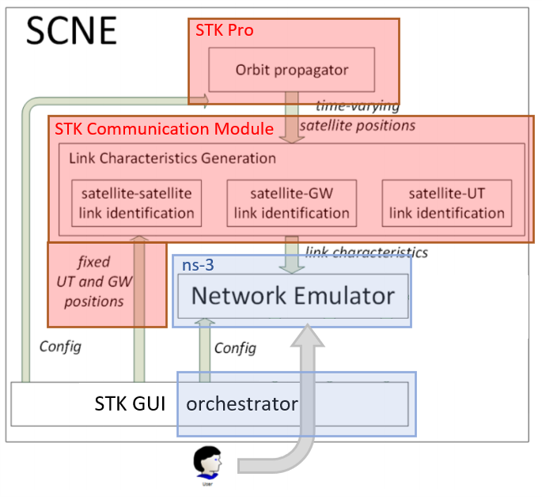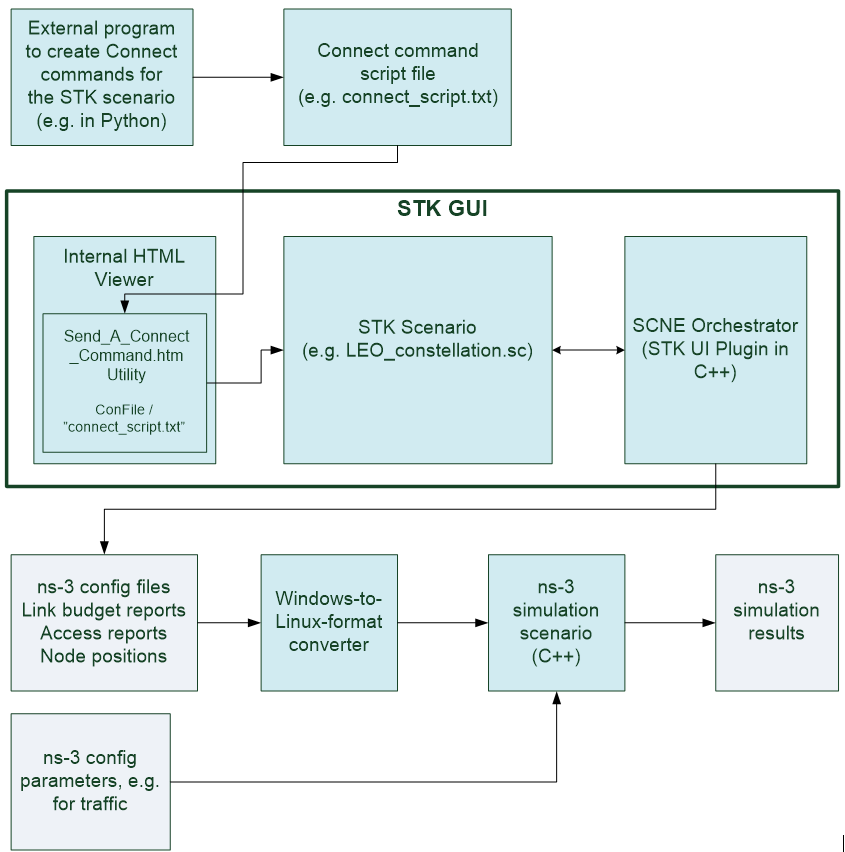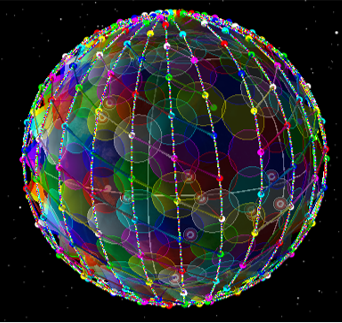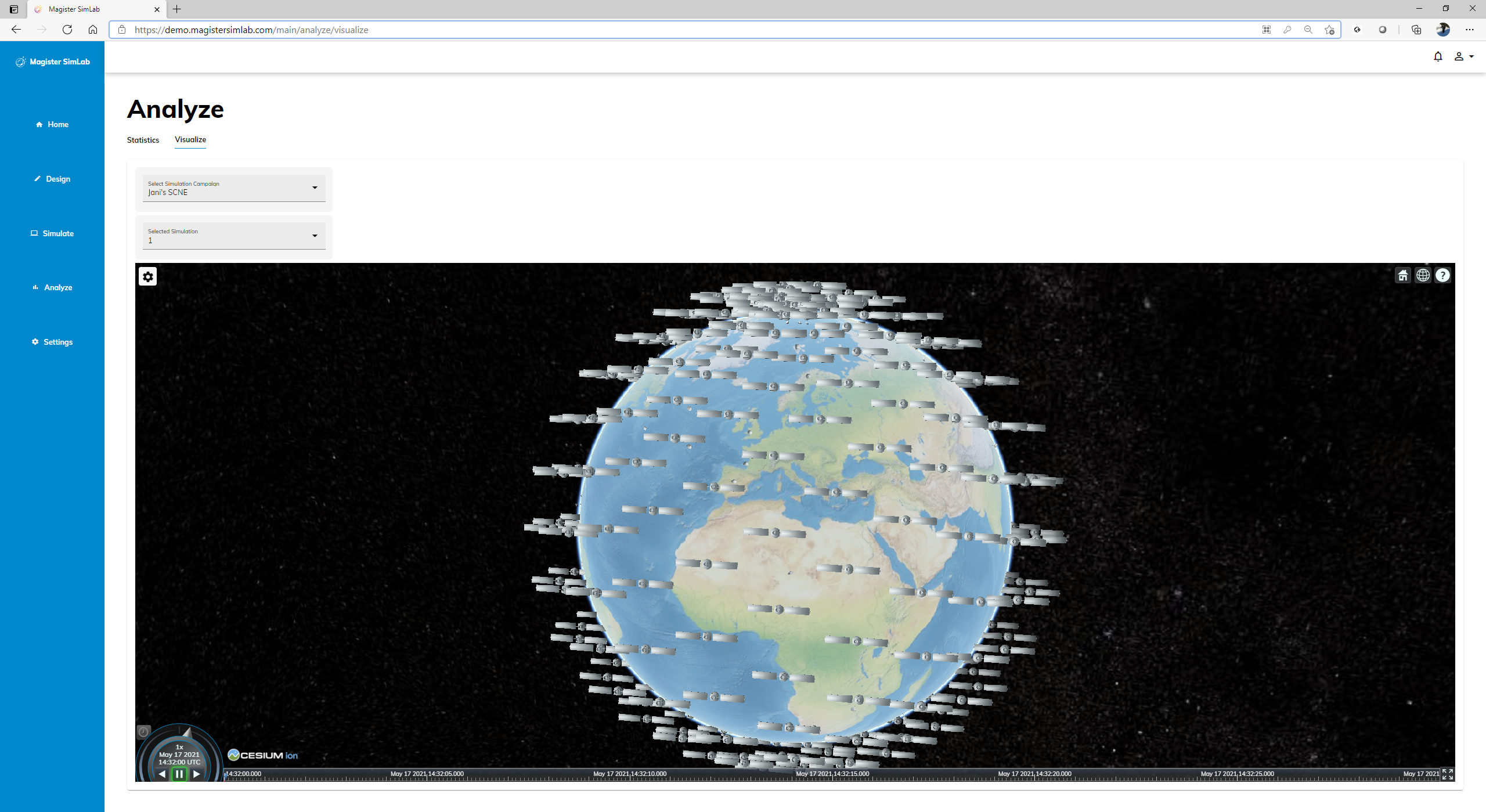The SCNE (Satellite Constellation Network Emulator) is a simulator for Non-Geostationary Satellite Orbit (NGSO) satellite mega-constellation network higher protocol layer performance analysis. The main adopted design assumptions for the SCNE can be listed as:
De-coupled orbital and network simulator architecture – providing the benefits of two different tools for orbital and network simulation. Capability of run the orbital and network simulators separately.
Capability of designing satellite constellations with no restrictions.
Non-Real Time (NRT) simulator – Network simulation is a complex time demanding function which depends hugely on the complexity of the models and size of the simulation scenario.
Per-packet level operation – The target is to evaluate the higher layer communication protocols operating on a packet resolution.
Open-source network simulator – allowing the users to build their protocols, features and algorithms of interest.

The SCNE is composed of three main components: the orbital simulator (STK), the network simulator (ns-3) and the SCNE orchestrator.
AGI's STK tool is commercial software. There is a free version of STK, but the SCNE requires a full STK license with additional Professional and Com module licenses. In SCNE, the STK is used as an orbital simulator
to model the SCNE physical and communication objects, i.e., UT, GW and satellite nodes and their transmitters and receivers
to create the link characteristics to be used as the network simulator input
Network Simulator 3 (ns-3) is a discrete-event network simulator, targeted primarily for research and educational use. Ns-3 is free software, licensed under the GNU GPLv2 license, and is publicly available for research, development, and commercial use. In SCNE, the ns-3 simulator is used as a network simulator:
to model the lower layer packet operations, such as packet transmissions over the channels, by utilizing the link characteristics provided by the STK
to model the higher layer packet operations, such as routing, by implementing various higher layer protocols
to model the traffic by implementing various applications (traffic generators)
The SCNE orchestrator is an SCNE plugin, which is used:
to create the required configuration data based on the STK scenario for ns-3
to configure and command the STK to form the required link characteristics and other input data for ns-3

The SCNE ns-3 simulator has been integrated to Magister SimLab. The default STK satellite scenario is 24 hours long and consists of 288 satellites within circular quasi-polar LEO orbits, 10 gateways (GW), and 50 user terminals (UT). Each LEO satellite is configured with 4 ISL links. If one wants to modify the satellite constellation specifications or create a new constellation, it needs to be done using the STK tool.


SCNE use cases are e.g.
Adaptive algorithms for ISL routing in space
Transport layer performance
End-to-end application performance
